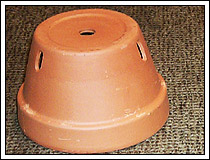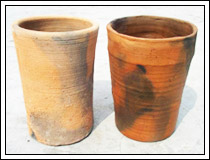Ceramic Pot Filtration
A ceramic pot filter is a simple, small yet extremely effective drinking water filter commonly used by hikers, outdoorsmen and sports enthusiasts. This small, lightweight filter not only removes nearly 99-100% of pathogens, bacteria and sediment present in water but does so at an effective rate. Moreover, compared to the water filters available commercially ceramic pot filters are extremely cost efficient.

Operation of Ceramic Pot Filters
Ceramic filters consist of a ceramic pot that is placed or hung over a larger plastic or ceramic container with a tap at the bottom. A lid is placed on top of the filter to prevent contamination. As the contaminated water is poured into the ceramic pot, it slowly oozes through the pores and is collected in the lower container. The treated water is stored in the container until needed, protecting it from recontamination. The user simply opens the tap at the base of the container when he/she needs the water.
Generally, the estimated flow rate of a typical ceramic filter is 1-3 liters/hour. This is highest when the pot is full and decreases with use and accumulation of contaminants within the filter pores.
Ceramic pot filters are generally fabricated with colloidal silver as it:
- Eliminates pathogenic bacteria and fungi by disabling the enzyme that they use for oxygen metabolism
- Destroys pathogens with an electric charge, causing their internal protoplast to collapse
- Renders pathogens unable to reproduce
- Kills parasites while in their egg stage.
Advantages of Ceramic Pot Filters
 The filter is small and lightweight The filter is small and lightweight- Removes most pathogens and suspended solids
- The silver coating ensures disinfection, so further disinfection is not needed
- Sustainable, minimal outside resources require. Ceramic for example is produced locally in most developing countries
- Household and voluntary labor can be used in the manufacturing process
- Simple and cheap
- Water tastes good.
|